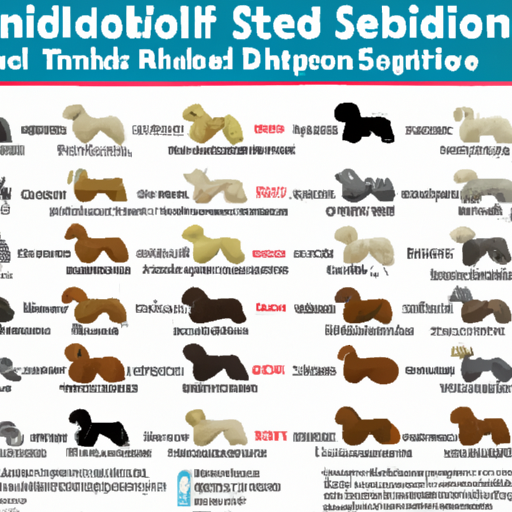As a caregiver, you understand the importance of maintaining a clean and allergen-free environment. If you’re considering adding a dog to your family, you might be wondering, “What breed of dogs do not shed?” The good news is that numerous breeds keep their fur to themselves. Here is a detailed guide to help you make the best choice.
H2: Understanding Why Dogs Shed
Before we get into the specifics of dog breeds that do not shed, it’s important to understand why dogs shed in the first place.
Dogs, like humans, shed to get rid of old, damaged, or excess hair. The amount and frequency of shedding depend on their health, breed, and sometimes, the season. Some dogs shed year-round, some “blow” seasonally, some do both, and some hardly at all.
Knowing this will help you appreciate the breeds that do not shed as much, and why they could be a better fit for your home.
H2: Breeds that Do Not Shed
Here’s a list of dog breeds that are known for their low-shedding properties.
-
Poodles: All varieties of Poodles – Standard, Miniature, and Toy – do not shed as much as other breeds. They have a curly, light-weight coat that holds onto the shed hair.
-
Bichon Frise: This breed has a double coat that traps the shed hair. Regular grooming is necessary to prevent matting.
-
Shih Tzu: Shih Tzus do not shed a lot. Their hair grows continuously, like human hair.
-
Maltese: Maltese dogs have a single, straight coat that minimizes shedding.
-
Scottish Terriers: They have a dense undercoat and hard outer coat that significantly reduces shedding.
| Breed | Shedding Level | Coat Type |
|---|---|---|
| Poodles | Low | Curly |
| Bichon Frise | Low | Double |
| Shih Tzu | Low | Long, straight |
| Maltese | Low | Single, straight |
| Scottish Terrier | Low | Dense Under, Hard Outer |
H2: Maintaining a Low-Shedding Dog
Even though these breeds do not shed much, they still require regular grooming to keep their coats healthy and prevent matting. This includes:
-
Regular brushing: Brushing your dog’s coat regularly will help remove loose hair and prevent it from matting. Depending on the breed, you might need to do this daily or a few times a week.
-
Bathing: Regular baths will help keep your dog’s skin and coat clean, reducing the amount of loose hair.
-
Professional grooming: Some breeds, like the Poodle and Bichon Frise, require regular professional grooming. This can include trimming and shaping the coat, as well as thorough brushing and bathing.
H2: The Benefits of a Low-Shedding Dog
Low-shedding dogs offer numerous benefits, especially for caregivers:
-
Less Cleaning: With less hair around the house, you will spend less time cleaning.
-
Fewer Allergies: Less hair and dander in the environment can help reduce allergic reactions.
-
Less Maintenance: While all dogs require grooming, low-shedding breeds often require less frequent grooming sessions.
FAQs
Q1: Are hypoallergenic dogs the same as non-shedding dogs?
A1: Not necessarily. Hypoallergenic dogs are breeds that are less likely to cause an allergic reaction. While non-shedding breeds can be hypoallergenic because they produce less dander, not all hypoallergenic dogs are non-shedding.
Q2: Do non-shedding breeds require less grooming?
A2: Not necessarily. While non-shedding breeds may not require as much brushing to remove loose hair, they often require regular grooming to prevent their hair from matting and keep their skin healthy.
Q3: Can I keep my dog from shedding?
A3: Shedding is a natural process for dogs and cannot be completely stopped. However, regular grooming can help manage shedding.
Q4: Are non-shedding dogs better for people with allergies?
A4: Yes, non-shedding dogs can be a better choice for people with allergies, as they produce less dander, which is a common allergen. However, individual reactions can vary.
So, if you’re looking for a dog that won’t fill your home with hair, these breeds are worth considering. Remember to consider other factors like the dog’s size, temperament, and care needs to ensure they fit well into your home and lifestyle.



